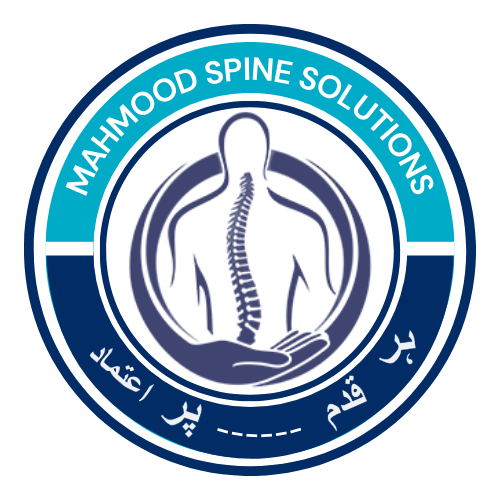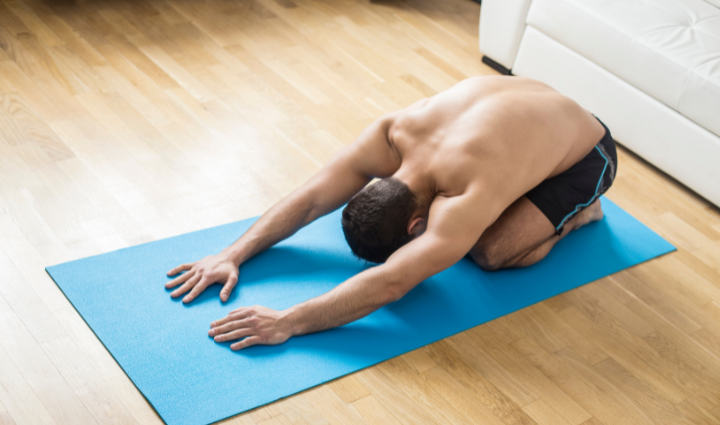A properly aligned spine is the foundation of a healthy body. It supports movement, protects the nervous system, and promotes overall well-being. Neglecting your spine can lead to poor posture, chronic back pain, and fatigue. Fortunately, incorporating simple spine alignment exercises into your routine can help you maintain or regain spinal health.
This guide explores the benefits, signs of misalignment, and the best exercises for a healthy spine. Read on to learn how you can boost your posture, reduce pain, and feel more energetic with these practical techniques.
Key Takeaways
- Spine alignment exercises improve posture and flexibility.
- They help alleviate chronic pain and prevent injuries.
- Suitable for all fitness levels, they require minimal equipment.
What Is Spine Alignment?
A healthy spine maintains its natural curves: the cervical (neck), thoracic (mid-back), and lumbar (lower back) regions. These curves help absorb shocks and keep your body balanced. However, modern habits like prolonged sitting and poor posture can disrupt this alignment, leading to discomfort and health issues.
Causes of Spine Misalignment
- Sitting for long periods.
- Poor ergonomic practices.
- Carrying heavy bags improperly.
- Injuries from accidents or sports.
Benefits of Proper Spine Alignment
Investing in spinal health can yield numerous benefits:
- Improved Posture: A straight spine gives you a confident appearance.
- Pain Relief: Reduces back, neck, and shoulder tension.
- Enhanced Mobility: Promotes smoother, pain-free movement.
- Nervous System Support: Protects the spinal cord and improves brain-body communication.
According to the Dr Mahmood Ahmad, a healthy spine is critical for overall vitality.
Common Signs of Spine Misalignment
Not sure if your spine is aligned? Watch for these signs:
- Postural Imbalances: Rounded shoulders or a forward-leaning head.
- Pain Symptoms: Frequent headaches, stiffness, or back pain.
- Fatigue: Strain on spinal muscles can drain your energy.
If these signs persist, consult a professional to ensure there’s no underlying condition.
Best Spine Alignment Exercises
Incorporating spine alignment exercises into your routine can significantly improve posture and reduce discomfort. These exercises are beginner-friendly and require minimal equipment.
Warm-Up Exercises for Spine Alignment
Before starting any workout, a proper warm-up is crucial to prevent injuries and enhance mobility.
- Cat-Cow Stretch:
- Begin on your hands and knees in a tabletop position.
- Inhale, arch your back and lift your head and tailbone (Cow Pose).
- Exhale, round your spine, and tuck your chin toward your chest (Cat Pose).
- Repeat 8-10 times.
- Child’s Pose:
- Kneel on the floor and sit back on your heels.
- Stretch your arms forward, lowering your chest toward the ground.
- Hold for 20-30 seconds to release tension.
Core Strengthening for Spine Support
A strong core acts as a foundation for spine alignment.
- Plank Variations:
- Hold a forearm or straight-arm plank for 20-60 seconds.
- Focus on keeping your body straight from head to toe.
- Dead Bug Exercise:
- Lie on your back with arms and legs raised toward the ceiling.
- Lower one arm and the opposite leg simultaneously, then return to the starting position.
- Alternate sides for 10-12 reps.
Posture Correction Exercises
Correcting your posture helps realign the spine and reduces tension.
- Wall Angels:
- Stand with your back flat against a wall.
- Slowly raise and lower your arms in a “snow angel” motion.
- Perform 10 reps, keeping your back in contact with the wall.
- Shoulder Blade Squeeze:
- Sit or stand upright.
- Pull your shoulder blades together and hold for 5 seconds.
- Repeat 8-10 times.
Yoga for Spine Alignment
Yoga promotes flexibility, alignment, and relaxation.
- Downward Dog:
- Start on all fours, then lift your hips toward the ceiling to form an inverted “V” shape.
- Keep your spine long and shoulders relaxed.
- Cobra Pose:
- Lie face down, place your hands under your shoulders, and lift your chest gently.
- Avoid straining your lower back.
Pilates for a Strong Spine
Pilates focuses on controlled movements and precise alignment.
- Spine Stretch Forward:
- Sit with legs extended and feet flexed.
- Inhale, then exhale as you reach forward, stretching your spine.
- Pelvic Curl:
- Lie on your back, knees bent, and feet flat.
- Lift your hips into a bridge position, then lower slowly.
Maintaining Spine Alignment Daily
Ergonomic Tips for Daily Life
Small adjustments in your environment can help maintain spine alignment:
- Use a lumbar cushion when sitting.
- Position your monitor at eye level.
- Opt for an adjustable chair to support proper posture.
Stretching and Mobility Routines
Stay active with simple daily stretches:
- Seated Twists:
- Sit in a chair and twist your torso gently to one side.
- Hold for 15 seconds and switch sides.
- Standing Side Bends:
- Reach one arm overhead and lean to the opposite side.
- Perform 5-6 reps on each side.
Incorporate these habits to ensure long-term spinal health.
Advanced Spine Alignment Exercises
Once you’ve mastered the basics, integrating advanced exercises can further enhance spinal health, strength, and flexibility. These exercises require greater control and may involve additional equipment.
1. Bird Dog with Resistance Band
This variation intensifies the classic Bird Dog exercise by adding resistance, targeting deeper core muscles and stabilizers.
- How to Perform:
- Attach a resistance band to a low anchor point.
- Start on all fours, holding the band in one hand.
- Extend the opposite leg and pull the band simultaneously, keeping your spine neutral.
- Alternate sides for 8-10 reps each.
- Benefits:
- Improves balance and spinal stability.
- Strengthens core and lower back muscles.
2. Standing Cable Row for Posture
Using a cable machine, this exercise targets upper back muscles to correct rounded shoulders and promote alignment.
- How to Perform:
- Set the cable machine at chest height.
- Stand upright, holding the handle with both hands.
- Pull the cable toward your chest while squeezing your shoulder blades together.
- Perform 10-12 reps.
- Benefits:
- Strengthens the thoracic spine.
- Enhances posture and upper body alignment.
3. Pilates Teaser
This challenging core exercise improves spinal flexibility and alignment control.
- How to Perform:
- Lie on your back with your legs extended and arms overhead.
- Simultaneously lift your legs and torso into a “V” shape, reaching your arms forward.
- Hold for a few seconds, then lower slowly.
- Repeat for 6-8 reps.
- Benefits:
- Builds core strength.
- Promotes spinal flexibility and control.
4. Stability Ball Roll-Out
This exercise focuses on core and spinal stabilization, demanding strength and precision.
- How to Perform:
- Kneel on the floor with your forearms on a stability ball.
- Slowly roll the ball forward, extending your body while keeping your spine neutral.
- Roll back to the starting position.
- Perform 10-12 reps.
- Benefits:
- Strengthens the core and lumbar region.
- Enhances stability and control.
5. Deadlift with Proper Form
A properly executed deadlift strengthens the lower back and promotes alignment, making it a staple for advanced spinal training.
- How to Perform:
- Stand with feet hip-width apart, holding a barbell in front of your thighs.
- Hinge at your hips, lowering the bar while keeping your spine neutral.
- Engage your core and lift the bar back to the starting position.
- Perform 8-10 reps.
- Benefits:
- Builds posterior chain strength.
- Reinforces proper spinal alignment during heavy lifting.
Tips for Advanced Exercises
- Always prioritize proper form over heavier resistance or intensity.
- Incorporate rest days to allow muscles and spine to recover.
- Use a spotter or coach for guidance when performing complex movements like deadlifts.
Final Thoughts
Prioritizing spine alignment exercises is a simple yet effective way to improve your posture, reduce pain, and enhance your overall health. These exercises not only strengthen your core and back but also support long-term spinal health.
Whether you’re a beginner or advanced, consistent practice can lead to noticeable results. Remember, a properly aligned spine is key to maintaining balance and mobility.
Incorporate spine alignment exercises into your routine today for a healthier, pain-free future!
FAQs About Spine Alignment Exercises
How can I align my spine naturally?
You can align your spine naturally by practicing good posture, doing daily stretching and strengthening your core and back muscles through targeted exercises.
Can exercise realign the spine?
Yes, exercises like planks, yoga poses, and stretches can help realign the spine by improving muscle balance and posture.
Can you straighten your spine with exercise?
While you cannot physically straighten a naturally curved spine, exercises can correct posture, reduce misalignment, and support a healthy spinal position.
Which exercise is best for the spine?
The Cat-Cow Stretch, Plank, and Wall Angels are among the best exercises for spine alignment and flexibility.
How often should I do spine alignment exercises?
For optimal results, perform these exercises daily or at least 3-4 times a week. Consistency is key to maintaining proper alignment and preventing issues.
Can spine alignment exercises relieve chronic pain?
Yes, many people find relief from chronic pain through targeted exercises. These movements strengthen muscles, improve posture, and reduce pressure on the spine. However, if your pain persists, consult a healthcare professional for personalized advice.
Are spine alignment exercises suitable for beginners?
Absolutely! Most exercises are beginner-friendly and can be modified to match your fitness level. Start with simpler movements like the Cat-Cow Stretch or Wall Angels, then progress to more challenging routines as you grow stronger.
What equipment do I need for spine alignment exercises?
Minimal equipment is required. A yoga mat is helpful for comfort, and resistance bands or a stability ball can enhance certain exercises. Most movements can be done with just your body weight.
Can improper exercises worsen my alignment?
Yes, doing exercises incorrectly may lead to strain or injury. Focus on maintaining proper form and technique. If you’re unsure, work with a professional or follow guided tutorials from reliable sources like Dr Mahmood Ahmad
How long before I see results from these exercises?
With consistent practice, you may notice improvements in posture and reduced discomfort within 2-4 weeks. Long-term benefits, like enhanced spinal health, require ongoing dedication.




